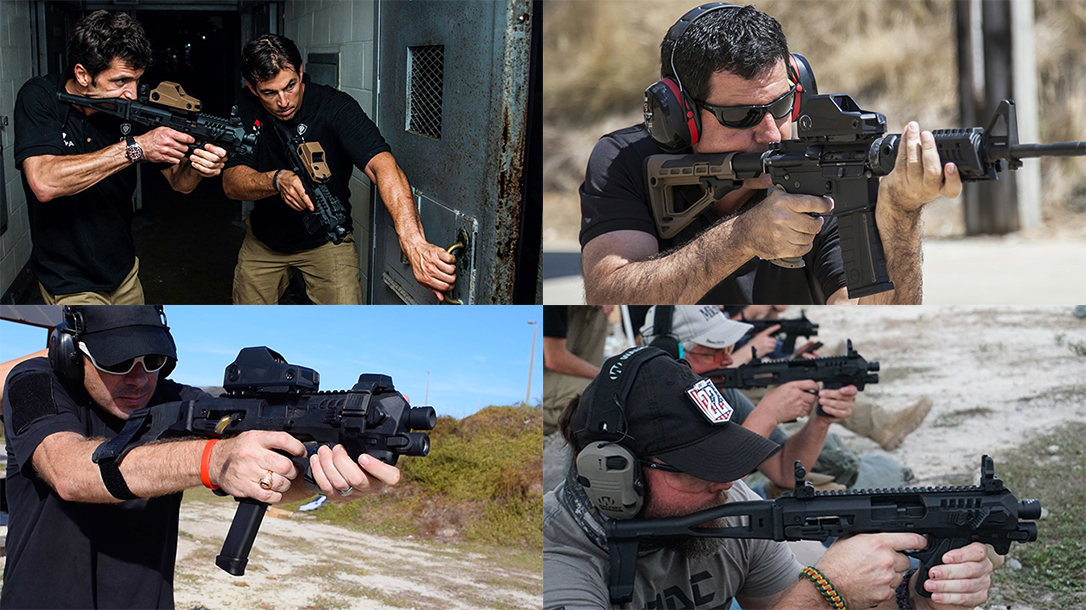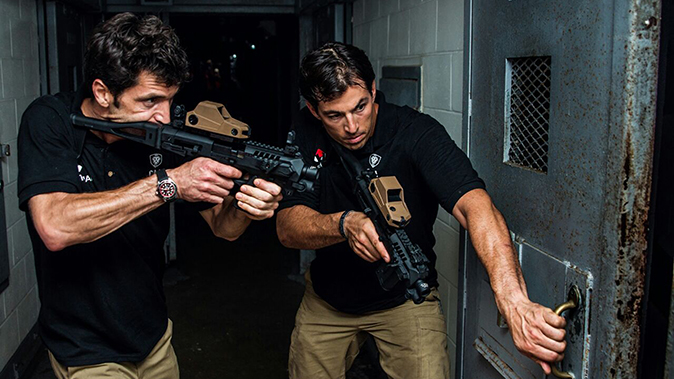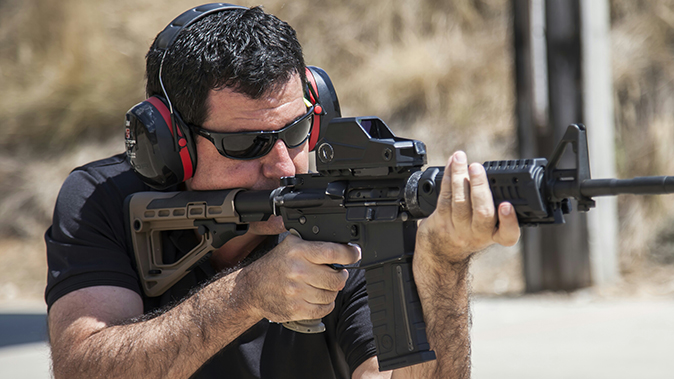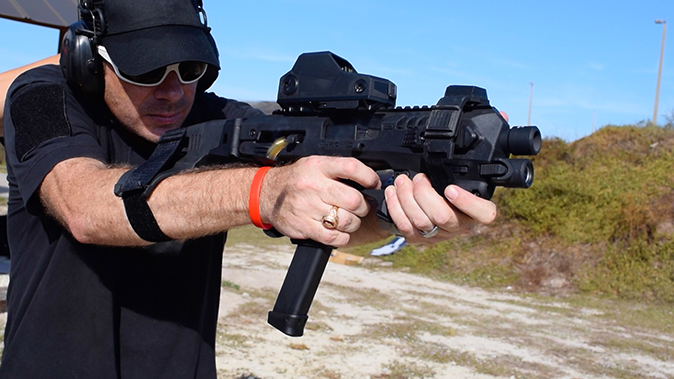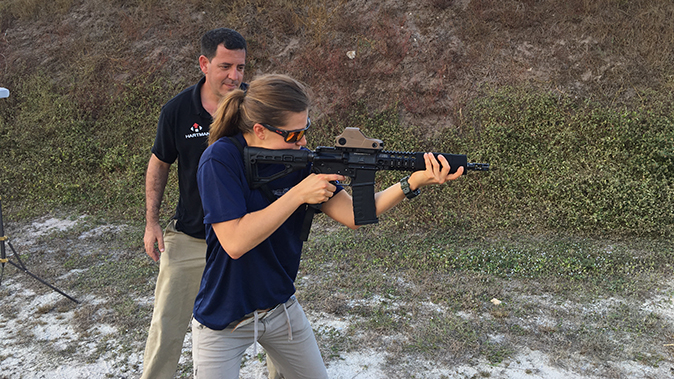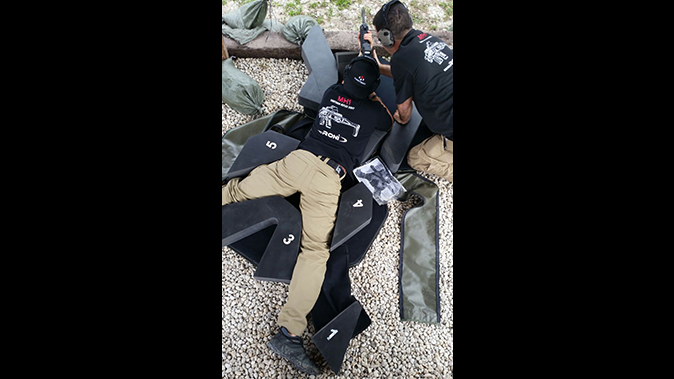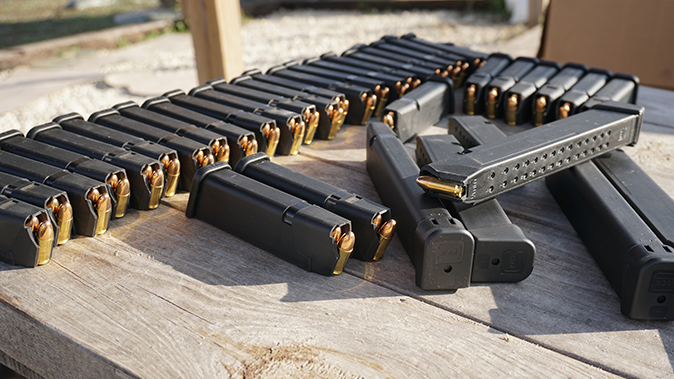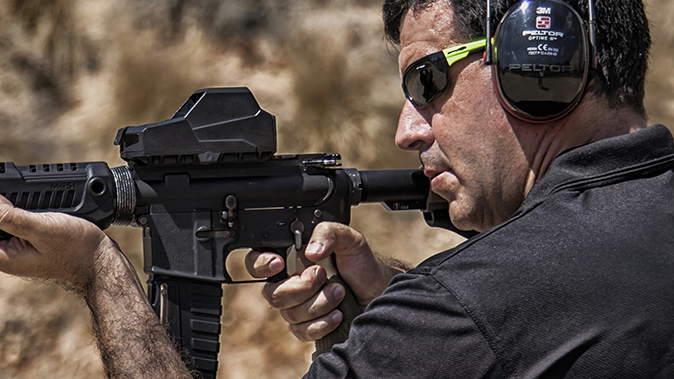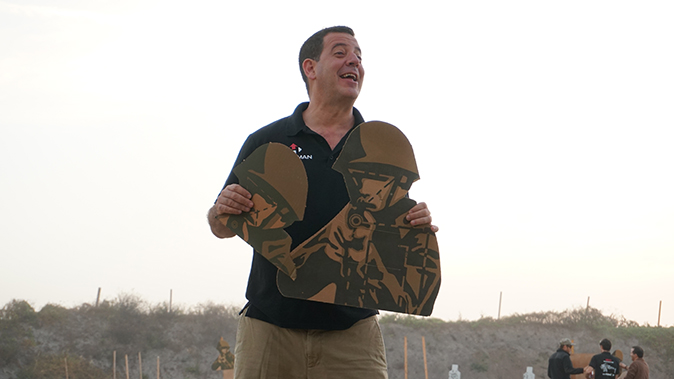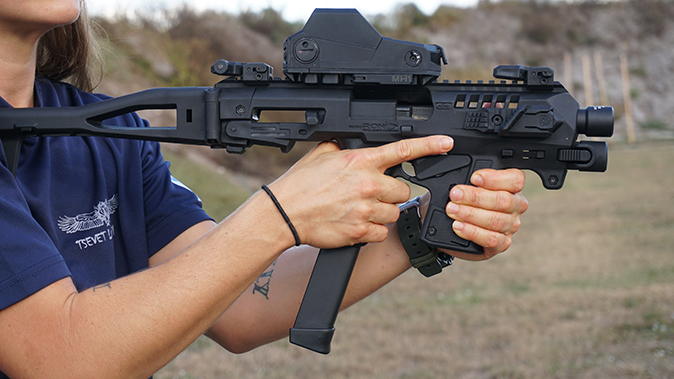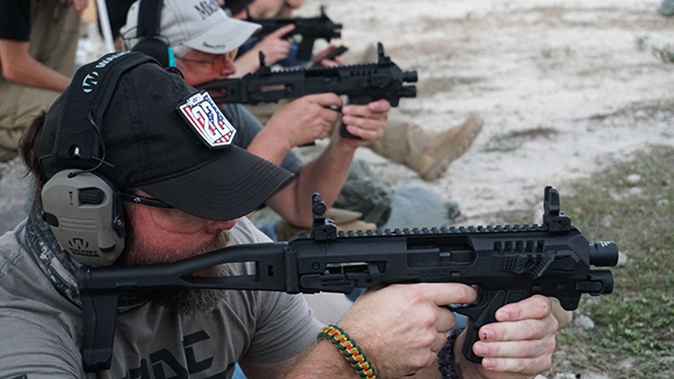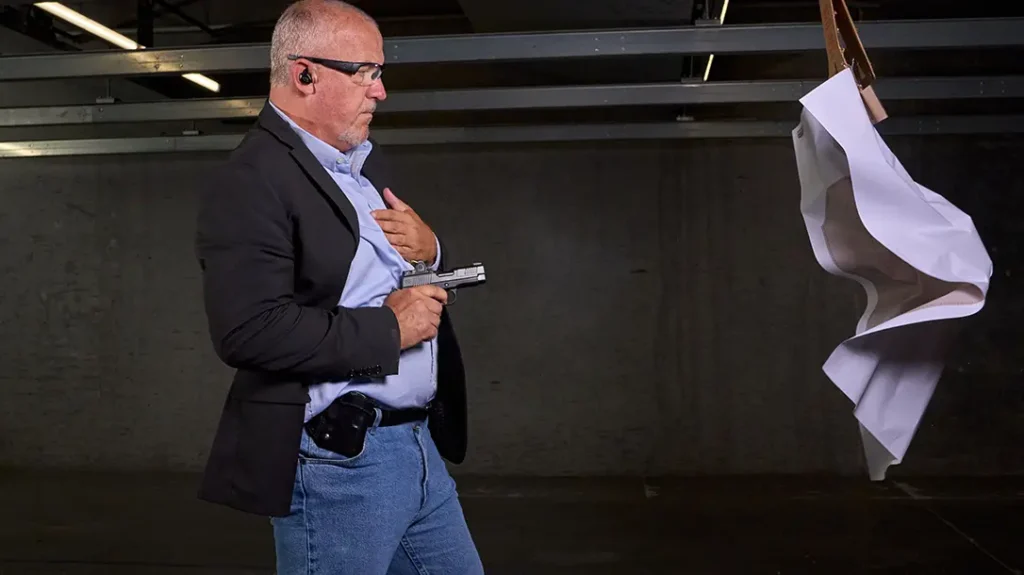The Holy Grail for anyone who has invested time and energy pursuing training is finding a methodology that answers the quest for greater effectiveness. The “Train the Trainer” seminar hosted by Israeli Defense Forces Lt. Col. Mikey Hartman and Command Arms Accessories (CAA) that I recently attended is such an experience. I knew something special was afoot when I pulled into the Altair Training Solutions facility where the event was held.
Founded in 2012, Altair’s main campus consists of a 1,150-acre Regional Training Facility (RTF) deep in the southwestern Florida Everglades. Before Altair took it over, the RTF was a high-security prison. The facility includes 60 buildings with more than 360,000 square feet of space, including a gym, several dining facilities, a 20,000-square-foot headquarters, a four-bedroom house, six three-bedroom duplexes, two hotels with 48 rooms, additional housing for more than 375 personnel, a research and development facility, an FAA-certified 3,800-foot private runway, a 2-mile long-range precision range, multiple ranges and shoothouses, and a 700-by-3,500-foot drop zone.
Israeli Combat
Mikey Hartman, a retired Israeli Defense Forces lieutenant colonel and now the CEO of CAA and Hartman Optics, served as the chief instructor for the event. Hartman served for more than 20 years in the IDF, where he developed and revamped the IDF’s shooting doctrine. He brought in several highly qualified instructors to assist, including IDF experts and U.S. Special Forces. Hartman urged participants to have an open mind in using the IDF methods during three days of training. He pointed out that the IDF methods he pioneered were not being represented as superior to American-based training, only as an alternative that could improve existing knowledge and skillsets.
Advertisement — Continue Reading Below
It was quickly apparent the CAA/Hartman seminar was no creampuff writer junket with only an emphasis on highlighting CAA/Hartman products. Yes, participants used CAA Micro RONI pistol-carbine conversion kits along with Hartman MH1 red-dot sights throughout the course. However, Hartman emphasized that the focus of the event was to train participants in IDF methods to the point where we could share the methodology, or train the trainer.
The group initially met in one of Altair’s classrooms to discuss the week and introduce IDF styles and laws of shooting. Hartman quickly proved to be a captivating instructor and accomplished lecturer. This speaks to his years of experience operating at a high level within the IDF training infrastructure. He liberally sprinkled anecdotes about his years of service into his descriptions. Several of his attending Israeli instructors expressed gratitude about learning the whys behind the techniques they trained with during their time in the IDF.
Advertisement — Continue Reading Below
Israeli Defense Forces Laws Of Shooting
We were introduced to the seven IDF laws of shooting. It was refreshing to be trained by a man who wrote the book on IDF shooting. Hartman urged and demonstrated a detail-oriented mindset.
The first IDF shooting law is the relationship between body and the ground. For example, prone is the most stable position, as more of the body is in contact with the ground when prone than in any other position. Forty-five- and 90-degree angles are important in building the base for all shooting positions by offering stability and managing recoil. The IDF prone position was demonstrated in the classroom and then taken to the range. At the range, the Hartman ZUES Marksmanship System was unveiled. ZUES stands for “Zero Under Eight Seconds,” and Hartman created it to quickly teach proper prone position form.
The ZUES is much more than a shooting mat. It has adjustable Styrofoam blocks that fit around and under a shooter when in position, locking them in place. Hartman was everywhere, making sure the angle to the target, and the shooter’s hands, feet and head were at his IDF standards.
Advertisement — Continue Reading Below
The second IDF law of shooting concerned the five points of contact between the body and carbine: shoulder, strong hand, cheek to stock, support-arm forearm to magazine and support hand to forend. Instructors used the IDF standing position to demonstrate the importance of the five points of contact. The support-arm forearm’s hold against the magazine was the biggest distinguishing point. In fact, the IDF Tavor rifle specifically incorporates a triggerguard design that interfaces with the forearm. With ARs, the magazine contacts the forearm.
Next Steps
Next, instructors detailed the breathing cycle. Participants were urged to break the shot when their lungs were empty. This serves as a natural pause in the respiratory cycle with the least amount of tension.
Then, Hartman instructed shooters on finding a natural zero position. Participants used the sitting position for Hartman to demonstrate its importance. The angle from the body to the target and the position of the legs are crucial. Hartman explained how IDF units would sit for hours in this position in preparation for ambush operations. The soundness of the position was obvious after setting up and then closing your eyes. Upon opening your eyes, the Hartman MH1’s reticle was still on target.
Advertisement — Continue Reading Below
Hartman then discussed aiming: focusing on the front sight, the target, then the front sight again before squeezing the trigger. He emphasized having a solid lock on the front sight when breaking the shot.
Even the trigger-pull method is dictated in the sixth IDF law of shooting. The trigger is pulled straight back with only the trigger finger moving in a way to provide a surprise break. The second joint of the finger is used with Glocks, ARs, AKs and other types of weapons while the tip of the finger is used for precision rifles. The manipulation of the trigger is done to provide a conscious reset without having to remove the finger from the face of the trigger. Nothing escaped Hartman’s eye about what’s required to accurately place rounds on target.
Following Through
The seventh IDF law of shooting is calling the shot via follow-through. This reinforced the need for a solid and stable shooting position in which recoil is controlled and repeatable. This allows the shooter to ride the muzzle rise in a way that brings the muzzle back on target quickly.
Advertisement — Continue Reading Below
With the IDF laws of shooting serving as guidelines, Hartman moved the class through the prone, standing, kneeling and sitting positions. The instruction mixed in night shooting, firing while moving, transitioning between positions, malfunction techniques and forays into one of Altair’s CQB shoothouses.
The IDF silhouette, shoulder and head targets were introduced and described. The Triumph Systems Threat Down targets, Pivotal Trainers and Pop Packs added another nice touch. As mentioned, CAA Micro RONIs—carbine and stabilizing brace versions—assisted with the training. The Hartman MH1 sight was mounted on Altair-provided ARs as well as the stabilizer-braced RONIs. Steel and paper targets were set at 25 and 35 yards. Instructors called out various IDF positions, with students broken into small groups for better supervision by the instructors. Hartman was a constant presence, working his way up and down the line and demonstrating various positions and drills.
Advertisement — Continue Reading Below
Putting It All Together
When asked how best to master the IDF laws of shooting, Hartman didn’t hesitate. “No matter the position, do not move your eyes from the target,” he said. “Even when bringing the rifle/carbine into firing position. Bring the weapon to your eye level. Do not lower your head/eyes to the stock.”
Hartman also urged diligent dry practice. The IDF uses hours, even days, of dry-fire drills. “Practice, practice, practice until positions and the IDF laws of shooting are smooth and automatic.”
The CAA/Hartman training proved a great chance to refresh or remedy training deficiencies. Hartman’s credentials lend legitimacy to his methods. Just as important as his credentials and background, Hartman is a dynamic instructor with a unique flair. That’s applicable in the way he encourages or points out flaws in a student’s methods on the range. He readily mixes anecdotes into his instruction. Hartman is all business while maintaining a good sense of humor. That relaxes attendees and eases any unfound concerns of performance anxiety, which only add to student stress. His instruction technique, as proven by more than 500,000 IDF soldiers and thousands of U.S. troops, is flexible, allowing for analysis of a class’s strengths and weaknesses, with extra attention to correcting weaknesses.
Advertisement — Continue Reading Below
A word about gear used during the fast-paced course: During the three days thousands of handgun and rifle rounds were fired downrange. Shooters experienced no issues with the Micro RONIs and Hartman MH1 sights. This serves as a solid testament to CAA and Hartman’s quality products.
For More information
Command Arms
caagearup.com
